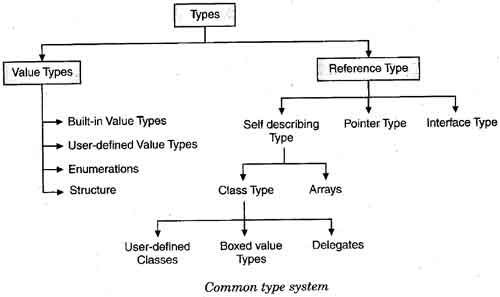CTS ( Common Type System )
Question : Write short notes on CTS ( Common Type System ) .
The language interoperability, and .NET Class Framework, are not possible without all the language sharing the same data types. What this means is that an "int" should mean the same in VB, VC++, C# and all other .NET compliant languages. Same idea follows for all the other data types. This is achieved through introduction of Common Type System (CTS).
Common type system (CTS) is an important part of the runtimes support for cross language integration. The common type system performs the following functions:
1. Establishes a framework that enables cross-language integration, type safety, and high performance code execution.
2. Provides an object-oriented model that supports the complete implementation of many programming languages.
The common type system supports two general categories of types:
1. Value types Value types directly contain their data, and instances of value types are either allocated on the stack or allocated inline in a structure. Value types can be built-in, user-defined or enumerations types.
2. Reference types
Reference types stores a reference to the value's memory address, and are allocated on the heap. Reference types can be self-describing types, pointers types, or interface types. The type of a reference type can be determined from values of self-describing types. Self-describing types are further split into arrays and class types are user-defined classes, boxed value types, and delegates.
CTS, much like Java, define every data type as a Class. Every .NET compliant language must stick to this definition. Since CTS defines every data type as a class; this means that only Object-Oriented (or Object-Based) languages can achieve .NET compliance.
You may also Find this interesting
Microsoft Intermediate Language


Leave Comment